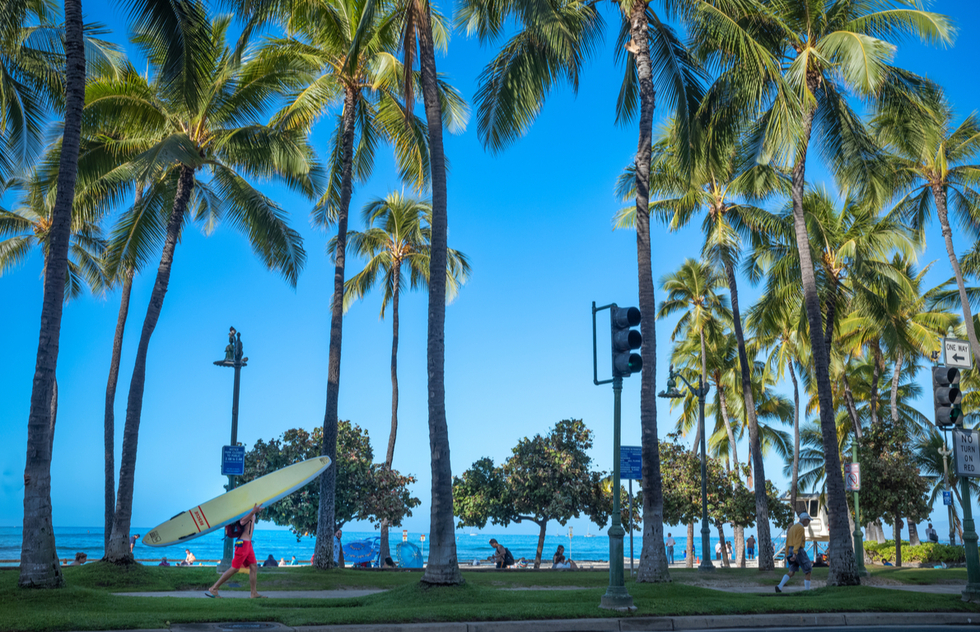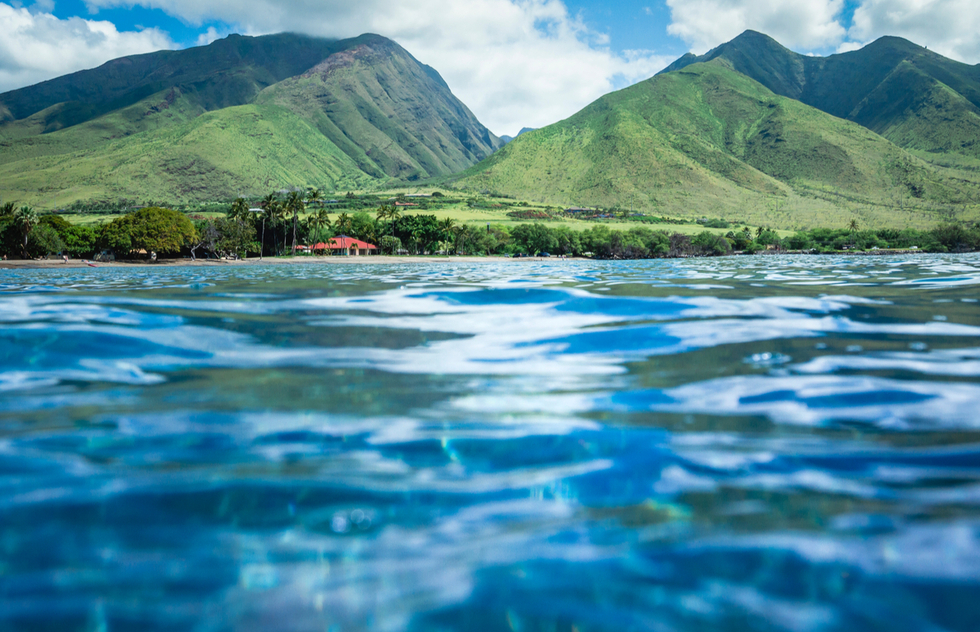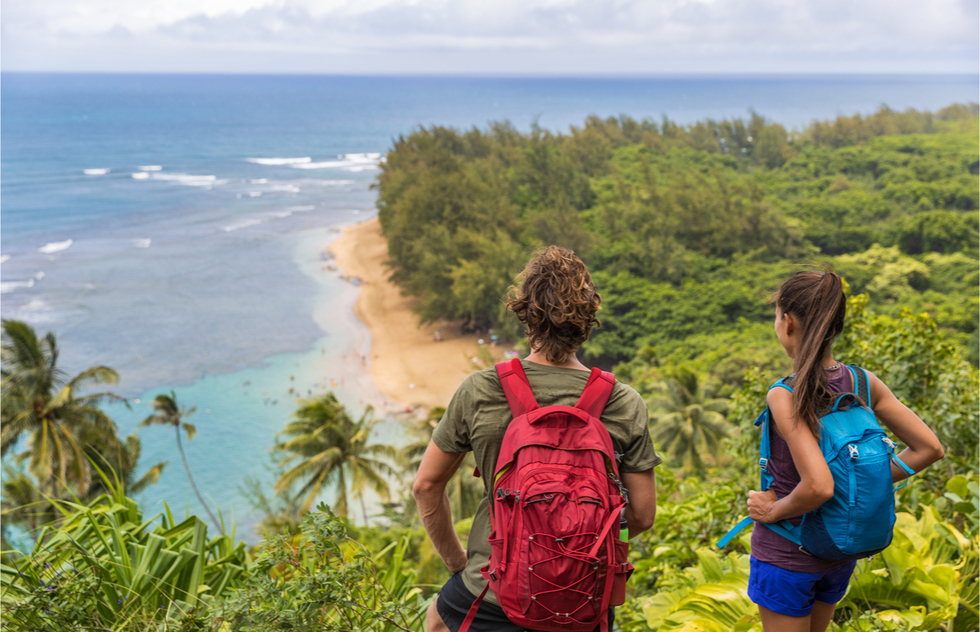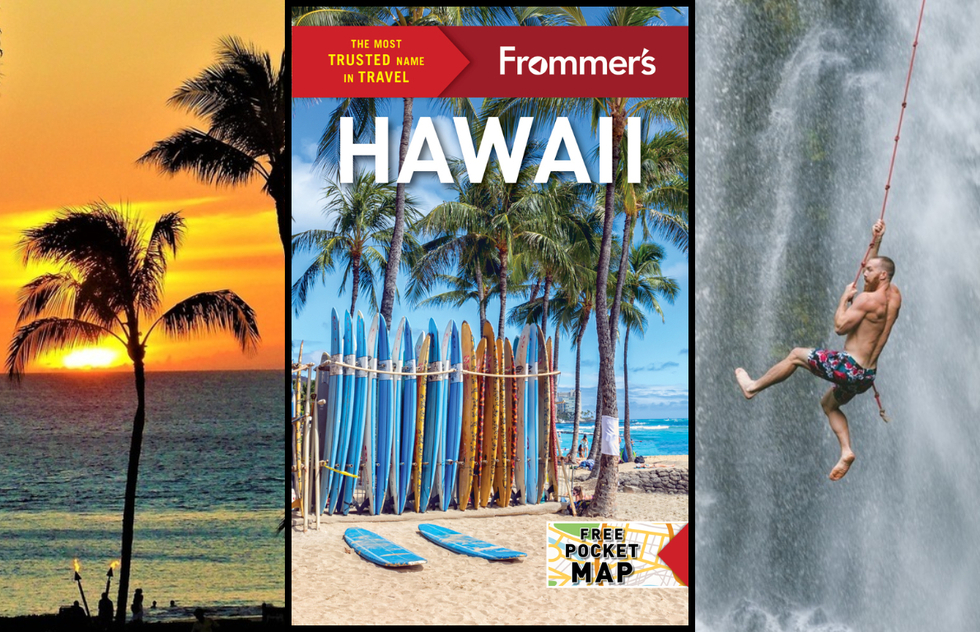After finally lifting some of the pandemic's strictest domestic travel restrictions, Hawaii is undergoing what Frommer's author Jeanne Cooper calls a "semi-return to normal."
And just in time to help visitors navigate the new (semi)normal comes the release this week of Frommer's Hawaii, the latest edition of our comprehensive guide to the land of leis and luaus.
Coauthors Cooper and Natalie Schack worked down to the wire to make sure the book is as accurate and up-to-date as possible, reflecting the many closures, openings, and other changes—in operating hours, services, and priorities—that the islands have experienced since the start of the pandemic.
We caught up with Cooper via email to get the lowdown on what's new in Hawaii, what's different, and why, as she puts it, "there's always something more to experience, especially with a culture that invites you to go deeper and an environment that needs all our efforts to preserve it."
An edited transcript of our exchange follows.
 (Waikiki, Honolulu | Credit: Theodore Trimmer / Shutterstock)
(Waikiki, Honolulu | Credit: Theodore Trimmer / Shutterstock)
FROMMER'S: Did you grow up in Hawaii?
JEANNE COOPER: I'm originally from Houston, Texas, where I grew up with songs and stories of Hawaii from my mom, who had spent a few formative teen years on Oahu in the pre-statehood, territorial era of the late 1940s and early '50s. Once my husband and I moved to San Francisco in the late '90s, we spent 20 years visiting Hawaii as often as we could until we moved to the Big Island in 2019.
Hawaii had some of the country's strictest Covid measures—necessarily, since we're talking about islands here. But what kinds of challenges did that present as you were researching the guidebook?
JC: For a long time, traveling inter-island was just as difficult as traveling across the ocean to Hawaii. You would have to do a 14-day quarantine on any island you visited and then at home when you returned. So I didn't travel at all for over a year, and only traveled a couple times in spring 2020 when you could travel with proof of testing.
So I really did most of my research very close to the deadline on this book, when I could just present proof of vaccination (which is now no longer needed at all). That was ultimately a good thing, if a bit stressful, because so many attractions, restaurants, and businesses were still closing, or changing their hours, services, or approach, and a few new things opened.
Were there any benefits to having fewer tourists around?
JC: Large numbers of fish returned to reefs, and turtles and rare Hawaiian monk seals popped up on once-crowded beaches. People who live here really appreciated seeing that. People in Waikiki still marvel at having been able to walk down the middle of the road on Kalakaua Avenue—the bustling main street—because there was no car traffic during the lockdown.
But there was a very real economic impact of virtually no tourism that caused a lot of hardship. Not all of the people who lost their jobs have been rehired or have had all their hours restored, and many people moved off the islands to find work elsewhere, and they're not returning.
 (Olowalu, Maui | Credit: Tyler Rooke / Shutterstock)
(Olowalu, Maui | Credit: Tyler Rooke / Shutterstock)
Why is this a good time to visit Hawaii?
JC: Now is a great time to enjoy the hotels that used the shutdown to do widespread renovations. You'll also get to experience their new emphasis on "Malama Hawaii"—caring for Hawaii—which gives guests who participate in certain environmental and cultural activities the benefit of free nights and other perks.
Another way to support local communities is to try using the islands' newly launched alternative to Uber and Lyft. The service is called Holoholo.
What's some of the new stuff you're excited to share with readers?
On Maui:
JC: The beautifully redesigned rooms of the Kaanapali Beach Hotel and the innovative menu of its new oceanfront Huihui restaurant showcase Hawaiian art and culture in surprising and engaging ways. Next door, the Westin Maui is dazzling club room–level guests with a second-floor beachfront lounge with soaking pools and delicious pupus (appetizers), while downstairs the Moroccan-Hawaiian restaurant Waicoco is a new must-try.
For activities, I've included experiences like helping restore native plants at Kipuka Olowalu or Maui Cultural Lands in hidden gorgeous valleys above Lahaina and Kaanapali, respectively. You'll get to know some of the cultural history of places few visitors or locals have seen.
For a paid activity, I highly recommend the farm-to-chocolate-bar tour at Maui Kuia Estate Chocolate in Lahaina. If you don't have time for the cacao orchard tour that includes tasting in a treehouse, just stop into the factory store for delicious chocolates and pastries with added local tropical flavors like guava and calamansi lime.
 (On Kauai's Kalalau Trail | Credit: Maridav/ Shutterstock)
(On Kauai's Kalalau Trail | Credit: Maridav/ Shutterstock)
On Kauai:
JC: The renovated Sheraton Coconut Beach Resort has restaurants and cafes worth seeking out, plus a brand-new luau pavilion for one of the island's best luaus, presented by hula teacher and recording artist Leilani Low. On the North Shore, I love how the new shuttle and reservation system for entrance and parking to Haena State Park means you can experience Ke'e Beach and the Kalalau Trail with many fewer people and much less hassle to find parking.
I really loved taking North Shore Charters' boat excursion from Anini Beach, where you walk from the sand right to the boat, then travel all the way to snorkel Nualolo Kai on Na Pali Coast. Guides share knowledgeable, lively cultural and historical tidbits as you pass the breathtaking scenery of Hanalei Bay and Kauai's North Shore.
On the Big Island:
JC: Lava has been flowing inside the crater of Hawaii Volcanoes National Park for some time now. Evening or early morning visits are a must to take in the otherworldly glow you can see from the rim or the bubbling lava lake that you can see with an easy 2-mile round-trip hike. There's also a great new paved 1-mile nature trail off Saddle Road, which many visitors take en route to Volcano. The trail, called Kaulana Manu (the Famous Birds) gives you a nice chance to stretch your legs en route to the park.
Monthly free guided hikes and twice-monthly volunteer planting sessions at Waikoloa Dry Forest, only 6 miles above Marriott's Waikoloa Beach Resort, let you see one of Hawaii's rarest native trees, the wiliwili, which blooms in summer.
A fun option for animal lovers: You can take a dog from the Hawaii Island Humane Society in Kona or Keaau (near Hilo) on a "field trip," with all necessities provided. An included map shows nearby beaches, hiking trails, and cafes where you can take the dogs. The "Adopt Me" harnesses on the pooches often lead to great conversations with locals.
For exciting hotel news, there's the dramatic and culturally inspired Mauna Lani, an Auberge resort, with the hottest restaurant on the Kona side of the island: CanoeHouse, run by a pair of Nobu veterans. But the hotel's casual HaLani is also an excellent choice and something worth stalking on OpenTable.
At the opposite end of the budget spectrum, the funky Hotel Honokaa Club and the recently upgraded Hilo Hawaiian Hotel on the rainier but still beautiful part of the island are worth checking out. Neither hotel is new but they're both new to the guidebook and are good values for those who prefer local, affordable options over the gorgeous but very pricey resorts.
Frommer's Hawaii by Jeanne Cooper and Natalie Schack is available now in paperback and e-book versions at bookstores and from online booksellers.






